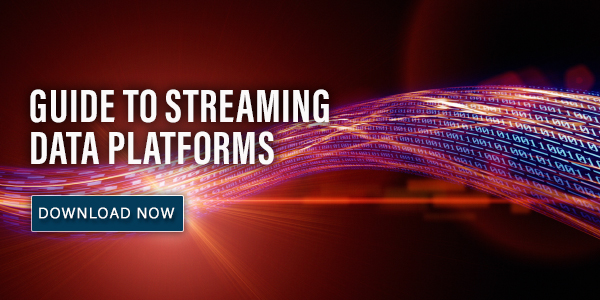Key Takeaways
- Businesses need to process and analyze data in real time to remain competitive in 2023 and beyond.
- True real-time decisioning enables businesses to respond to data as it is generated, providing a competitive advantage.
- Implementing true real-time decisioning offers benefits such as faster decision-making, increased operational efficiency, improved customer experience, and better fraud detection.
- Challenges in implementing true real-time decisioning include data quality, scaling, integration, security, and cost.
- Implementing true real-time decisioning requires investment in infrastructure, analytics capabilities, and personnel training.
Simply put: in the year 2023 and for the foreseeable future, businesses need to be able to process and analyze data in real time to remain competitive.
Streaming data platforms such as Google Cloud Platform, Microsoft Azure, Databricks, Snowflake, AWS Kinesis, and Apache Kafka are becoming increasingly popular, but not all of them are capable of true real-time decisioning. In this blog post, we will explore why streaming data platforms need true real-time decisioning, the benefits it provides to businesses, and the challenges involved in implementing this technology.
Table Of Contents
What is a Streaming Data Platform?
A streaming data platform is a software architecture that enables the processing and analysis of data as it is generated, without the need for batch processing. It allows businesses to respond to data in real time, providing them with immediate insights and the ability to make informed decisions.

Why Streaming Data Platforms Need True Real-Time Decisioning
True real-time decisioning is necessary for streaming data platforms because it enables businesses to respond to data as it is generated. With true real-time decisioning, businesses can analyze and act on data within milliseconds, giving them a distinct competitive advantage in many ways (discussed below) and allowing them to take full advantage of their streaming data by not wasting any of it.
Benefits of True Real-Time Decisioning
There are several benefits to implementing true real-time decisioning in streaming data platforms:
1. FASTER DECISION MAKING
True real-time decisioning enables businesses to make decisions faster, allowing them to respond to changes in real time. This can provide a competitive advantage by enabling businesses to respond to market changes or customer needs faster than their competitors. For example, a logistics company can optimize its routes in real time, reducing delivery times and improving customer satisfaction.
2. INCREASED OPERATIONAL EFFICIENCY
Batch processing can be time-consuming and resource-intensive, which can limit the efficiency of data processing. With true real-time decisions, businesses can process and analyze data as it is generated to improve efficiency. For example, a manufacturing company can monitor its production lines in real-time, detecting and addressing issues as they occur.
3. IMPROVED CUSTOMER EXPERIENCE
Real-time decisioning enables businesses to personalize the customer experience by responding to customer data in real time. For example, an e-commerce website can recommend products based on the customer’s browsing history, improving the customer experience and increasing sales. In addition, real-time decisions can enable businesses to provide real-time support to customers, addressing issues as they occur.
4. BETTER FRAUD DETECTION
True real-time decisioning can help businesses detect fraud faster, preventing losses and improving security.A bank, for example, can detect fraudulent transactions in real time, preventing the loss of funds. In addition, real-time decisioning can help businesses detect anomalies in their data, such as unusual patterns of behavior or unexpected trends, enabling them to take proactive measures to prevent fraud or security breaches.
Challenges With Implementing True Real-Time Decisioning
While the benefits of true real-time decisioning are clear, there are also several challenges involved in implementing this technology. These include:
DATA QUALITY
Real-time decisioning requires high-quality data that is accurate, complete, and up-to-date. This can be challenging to achieve, especially when dealing with large volumes of data generated in real time.
SCALING
Real-time decisioning requires the ability to process and analyze large volumes of data in real time. This requires a highly scalable infrastructure that can handle the increased workload.
INTEGRATION
Real-time decisioning requires integration with other systems, such as databases, analytics platforms, and business applications. This can be challenging, especially when dealing with legacy systems or systems that were not designed to work together.
SECURITY
Real-time decisioning involves the processing of sensitive data, such as financial transactions or personal information. This requires a robust security infrastructure to prevent data breaches or cyberattacks.
COST
Implementing true real-time decisioning can be expensive, requiring significant investments in infrastructure, software, and personnel. This can be a barrier to entry for smaller businesses or those with limited resources.
How to Implement True Real-Time Decisioning
To implement true real-time decisioning, businesses need to consider several factors, including:
INFRASTRUCTURE
A highly scalable infrastructure is required to handle the increased workload of real-time decisioning. This may include cloud-based services or distributed computing systems, such as Apache Kafka or Apache Spark.
ANALYTICS
Real-time decisioning requires sophisticated analytics capabilities, including machine learning, artificial intelligence, and predictive analytics. Businesses need to invest in the right tools and personnel to implement these capabilities effectively.
TRAINING
Personnel need to be trained in the use of real-time decisioning technologies and how to interpret and act on real-time data. This may involve investing in training programs or hiring personnel with the required skills and expertise.
Conclusion
In conclusion, true real-time decisioning is necessary for streaming data platforms to provide businesses with the ability to respond to data in real time. The benefits of true real-time decisioning include faster decision-making, increased efficiency, improved customer experience, and better fraud detection. However, there are also challenges involved in implementing this technology, including data quality, scalability, integration, security, and cost. Businesses need to invest in the right infrastructure, analytics capabilities, integration, security, and training to implement true real-time decisioning effectively. By doing so, they can gain a competitive advantage in today’s fast-paced digital world.



